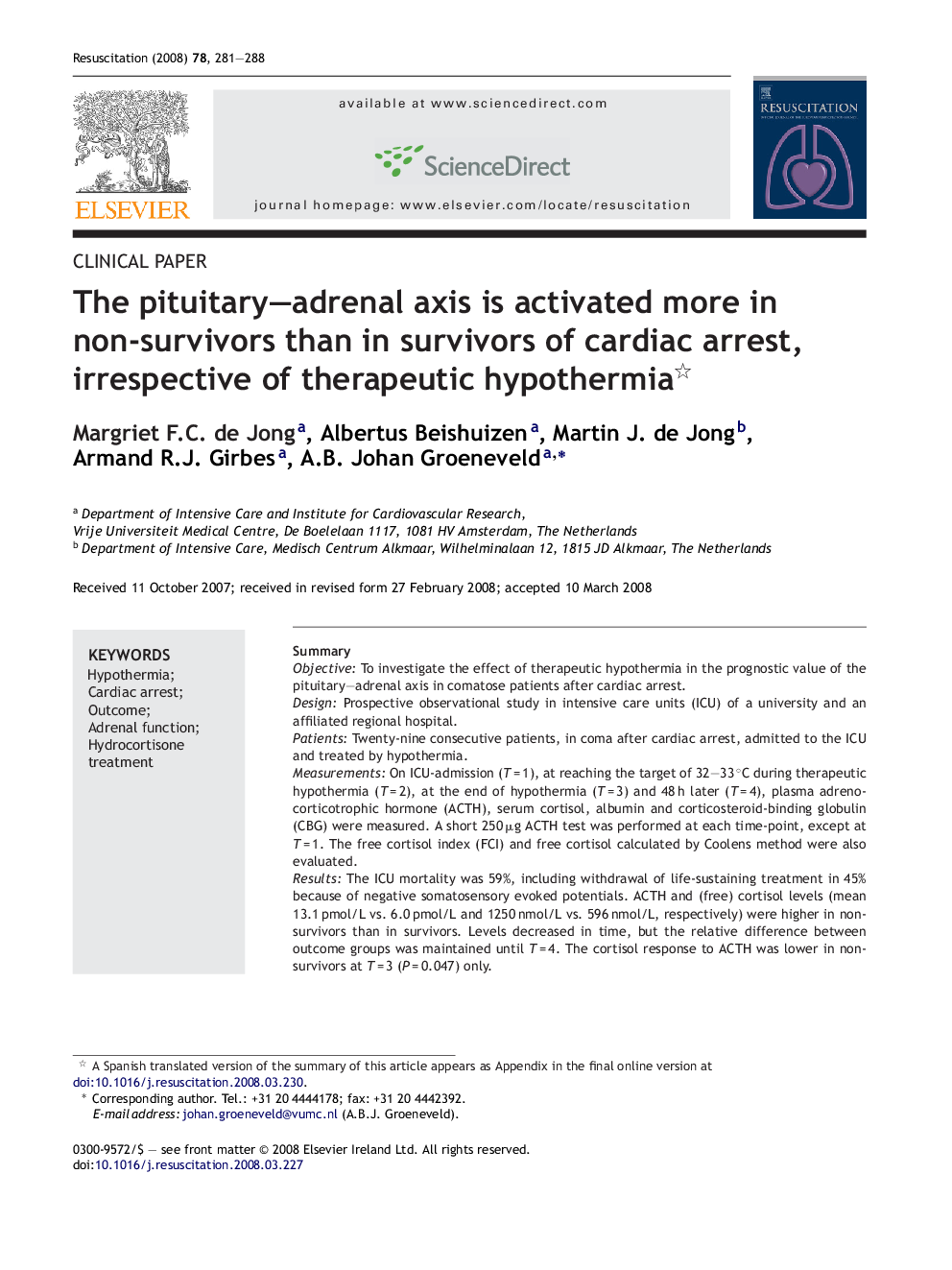| Article ID | Journal | Published Year | Pages | File Type |
|---|---|---|---|---|
| 3010444 | Resuscitation | 2008 | 8 Pages |
SummaryObjectiveTo investigate the effect of therapeutic hypothermia in the prognostic value of the pituitary–adrenal axis in comatose patients after cardiac arrest.DesignProspective observational study in intensive care units (ICU) of a university and an affiliated regional hospital.PatientsTwenty-nine consecutive patients, in coma after cardiac arrest, admitted to the ICU and treated by hypothermia.MeasurementsOn ICU-admission (T = 1), at reaching the target of 32–33 °C during therapeutic hypothermia (T = 2), at the end of hypothermia (T = 3) and 48 h later (T = 4), plasma adrenocorticotrophic hormone (ACTH), serum cortisol, albumin and corticosteroid-binding globulin (CBG) were measured. A short 250 μg ACTH test was performed at each time-point, except at T = 1. The free cortisol index (FCI) and free cortisol calculated by Coolens method were also evaluated.ResultsThe ICU mortality was 59%, including withdrawal of life-sustaining treatment in 45% because of negative somatosensory evoked potentials. ACTH and (free) cortisol levels (mean 13.1 pmol/L vs. 6.0 pmol/L and 1250 nmol/L vs. 596 nmol/L, respectively) were higher in non-survivors than in survivors. Levels decreased in time, but the relative difference between outcome groups was maintained until T = 4. The cortisol response to ACTH was lower in non-survivors at T = 3 (P = 0.047) only.ConclusionsIn comatose patients resuscitated from cardiac arrest, the pituitary–adrenal axis is activated particularly in those dying in the ICU, irrespective of therapeutic hypothermia. Hence, activation of the axis may be a marker of fatal cerebral damage. There is no firm evidence for relative adrenal insufficiency associated with death and a transiently blunted cortisol response to ACTH in non-survivors may be attributed to higher baseline values.
